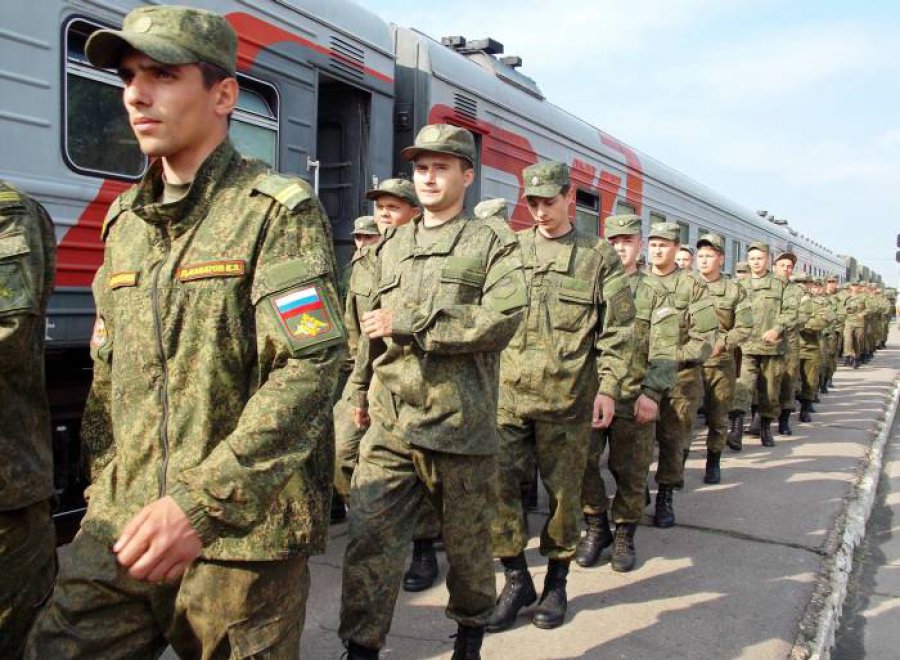Russian troops’ movement to Belarusian border increases risk of confrontation between Moscow and NATO
 The situation has not changed
The situation has not changed

Military build-up in the western regions of Russia is both a consequence and a symptom pointing to the fact that ‘hawks’ have taken over in the Kremlin. This means, the Russian government is preparing for a long-lasting confrontation with the West. Evidently, it is going to complicate the environment for all countries in the region, especially those on the ‘confrontation line’: Ukraine-Belarus-Moldova.
The news about the relocation of the 28th Motorised Brigade of the Russian Ground Forces from Urals to the Bryansk region has raised concerns in Belarus. That said, apparently, the actions of the Russian military leadership are not connected with the Belarusian-Russian relations in any way. Moreover, their connection with the Russian-Ukrainian war is rather indirect.
It should be recalled, that during the reform held by former Defence Minister Anatoly Serdyukov, military units have been drastically reduced and division level units abolished (except for the one in the Far East). Priority districts included South (Caucasus region) and Centre (formerly Soviet Central Asia). The former Russian Defence Ministry leadership regarded Western Military District as the support area. Of the 50 armoured and mechanized infantry battalions of the Russian Ground Forces in 2008 by late 2010, only 22 battalions were scattered from Murmansk in the north to Belgorod the south and from Kaliningrad in the west to Komi in the east.
Russian generals, who negatively perceived NATO’s eastward expansion, have criticised a sharp reduction in the military forces in the west. Military experts pointed to the mismatch between the territory size and its defence capacity. In 2009, Russia planned to place an Airborne Brigade and the Smolensk region. But the plan has never materialised. Appointed in late 2012, Defence Minister Sergei Shoigu started recreating large military formations. For instance, in May 2013, based on Kantemir and Taman Division teams, truncated divisions were recreated, which were later incorporated into the newly formed 1st Tank Army. In November 2014, the Russian Defence Ministry announced its intention to place Motorized Infantry Brigade in Yelnya (Smolensk region), which was stationed there before the Serdyukov’s reform.
In addition, the local administration played an important role in the Ministry’s decision: due to the closure of the military unit, unemployment had increased so as the burden on the local budget to maintain facilities previously used by the military, as well, already drastic socio-economic situation in the region has worsened. In January 2016, the Ministry said it would reinforce the brigade in Yelnia into a division. Overall, in 2016, the Russian military leadership is going form three divisions on the ‘western front’. In addition, several teams will relocate from the Russian hinterland to the western border. One of them has relocated to Klintsy.
Official reason for the relocation was NATO activity. However, the new units have been deployed quite far from the Russian border with the Alliance member-states, which means that Russia had to come to terms with the need to enhance its defence against NATO without Belarus.
Meanwhile, the fact that motorised infantry and armoured divisions are shock-purpose compounds designed for offensive operations raise concerns. The Kremlin has thereby demonstrated its willingness to escalate the confrontation with NATO. The Russian command is unlikely to be serious about invading a NATO country. The fact that new units have been placed near Belarusian and Ukrainian borders points to what regions Russian generals regard as the most likely for ‘harsh’ confrontation with the West. Such an approach is in full compliance with Russia denying the independence of Ukraine and Belarus, particularly noticeable in recent years. Apparently, the Kremlin has adopted a vision of Belarus, Ukraine and Moldova as a theatre for the struggle with the West for geopolitical influence.
Enhanced Russia’s military presence in the west, coupled with Moscow’s belligerent rhetoric has demonstrated that the ‘war party’ has taken over in the Kremlin. Their main ideological attitudes include: uncompromising confrontation with the West and the United States in particular, reducing the threshold for the use of armed force in international relations, denying the independence of the post-Soviet states and the inviolability of their borders. Evidently, there are no grounds to believe that the confrontation should reduce in the near future; the ‘Second Cold War’ has begun in the region. And it is becoming the new ‘normal’ for many years to come.
Image: klintsy.info
Subscribe to our newsletter




Situation in Belarus
Constitutional referendum: main consequences


 Video
Video
How to count the political prisoners: are the new criteria needed?


 Video
Video
Paternalism In Decline, Belarusian Euroscepticism, And The Influence Of Russia


 Video
Video












